Potrebujeme váš súhlas na využitie jednotlivých dát, aby sa vám okrem iného mohli ukazovať informácie týkajúce sa vašich záujmov. Súhlas udelíte kliknutím na tlačidlo „OK“.
ASTM F2955-12
Standard Guide for Training for Level III Rope Rescue (R3) Rescuer Endorsement
Automaticky preložený názov:
Štandardné Guide pre školenia pre Level III Rope záchranného (R3) záchranár Schválenie
NORMA vydaná dňa 1.6.2012
Informácie o norme:
Označenie normy: ASTM F2955-12
Poznámka: NEPLATNÁ
Dátum vydania normy: 1.6.2012
Kód tovaru: NS-54784
Počet strán: 7
Približná hmotnosť: 21 g (0.05 libier)
Krajina: Americká technická norma
Kategória: Technické normy ASTM
Kategórie - podobné normy:
Anotácia textu normy ASTM F2955-12 :
Keywords:
belay, extrication, highline, rescue, rope, SAR, technical rescue, USAR, ICS Number Code 13.200 (Accident and disaster control)
Doplňujúce informácie
| Significance and Use | ||||||||||||||||||
|
4.1 This guide establishes a minimum standard for training rope rescuers as it relates to their rope rescue specific knowledge and skills. A person trained to this guide is an endorsed Level III Rope Rescuer (LRT-R3 Rescuer). 4.1.1 Every person who is identified as an endorsed LRT-R3 Rescuer shall have met the requirements of this guide. 4.1.2 This guide is only the third level of training for rope rescue personnel and, in conjunction with Guides F2209, F2751, F2752, and F2954, only establishes the minimum knowledge and skills required for a person to perform or lead advanced rope rescue. No other advanced skills are included or implied. 4.1.3 In addition to meeting the requirements of this guide, an endorsed LRT-R3 Rescuer shall also be adequately trained to operate effectively and safely in the environment in which he is expected to work (that is, wilderness, urban, industrial, and so forth). 4.1.4 Nothing in this guide precludes an AHJ from adding additional requirements for its own members. 4.2 Endorsement to Level III Rope Rescue (LRT-R3 Rescuer) is an indication that a person possesses adequate field skills and knowledge to make mission-critical decisions. A person so endorsed is qualified to support or direct a rope rescue team in an area with high fall exposure and/or falling hazard potential, including high angle environments. 4.3 This guide by itself is not a complete training document. It is only an outline of the topics required for training or evaluating an endorsed LRT-R3 Rescuer. It may, however, be used in the development of, or as part of, a complete training document or program. 4.3.1 This guide does not stand alone. It must be used with the referenced documents to provide the specific information needed by an endorsed LRT-R3 Rescuer or for an AHJ to properly evaluate a training program or text. 4.4 Though this guide establishes only minimum standards, it does not imply that an endorsed LRT-R3 Rescuer is a “trainee,” “probationary,” or other similar term member of an organization. It is the responsibility of the AHJ to determine the requirements and qualifications for member ratings. 4.5 Because technical rope rescue is inherently dangerous, and rope rescuers are frequently required to perform rigorous activities in adverse conditions, regional and national safety standards shall be included in agency and organization policies and procedures. An endorsed LRT-R3 Rescuer shall complete all activities based on an analysis of risk versus benefit, and shall follow applicable and mandated safety standards. 4.6 This guide can be used to evaluate a document to determine if its content includes the topics necessary for training an endorsed LRT-R3 Rescuer. Likewise, this guide can be used to evaluate an existing training program to see if it meets the requirements of this guide. 4.7 The knowledge and skills requirements in the following sections are not presented in any particular order and do not represent a training sequence. 4.8 Except where a physical skill needs to be shown, it is up to the AHJ to determine the best way to evaluate a person’s knowledge. This may be by written exam, oral exam, demonstration, or by some combination of the three. |
||||||||||||||||||
| 1. Scope | ||||||||||||||||||
|
1.1 This guide is intended to be used in conjunction with, and as an add-on to, Guides F2751, F2752, and F2954 (or equivalent for other environments), to address the specific knowledge and skills required for a rescuer who participates in rope rescue at a higher level of responsibility and complexity. 1.1.1 Specifically, this guide is intended to define the training that would prepare an endorsed Level III Rope Rescuer (LRT-R3) or equivalent to support or direct a team in advanced rope rescue functions, including pre-planning and size-up of rope rescue operations, designing and directing the construction of rope systems for moving a victim in low and high angle environments, directing the construction and operation of highline and related rope systems, and performing advanced rope rigging functions, in conjunction with other rescue duties. 1.1.2 This guide establishes the minimum training standard for an endorsed LRT-R3 Rescuer as related to general, field, and rope rescue-specific knowledge and skills. 1.2 An endorsed LRT-R3 Rescuer performs rope rescues in low and high angle terrain and is capable of directing LRT-R1 and LRT-R2 Rescuers. 1.2.1 This guide alone does not provide the minimum training requirements for performing or assisting in rescues that occur in partially or fully collapsed structures, in or on water, in confined spaces, or underground (such as in caves, mines, and tunnels). 1.2.2 This guide alone does not provide the minimum training requirements for climbing Class 5 or higher rock and/or ice to perform a rescue. 1.3 An endorsed LRT-R3 Rescuer is required to have knowledge and skill sets pertaining to technically advanced subject evacuation. These include but are not limited to advanced knots and rigging, functioning as a litter tender in a high angle lowering or raising operation, and directing a team in the rescue of a subject suspended in a high angle environment. 1.4 Type III teams, as defined in Classification F1993, which may utilize personnel trained to this guide are Kind A (wilderness), Kind B (urban), and Kind C (mountainous). 1.4.1 Further training may be required before an endorsed LRT-R3 Rescuer can actually participate on a particular kind of rope rescue team, depending on the authority having jurisdiction (AHJ) regulations or policies. 1.5 This standard does not purport to address all of the safety concerns, if any, associated with its use. It is the responsibility of the user of this standard to establish appropriate safety and health practices and determine the applicability of regulatory limitations prior to use. |
||||||||||||||||||
| 2. Referenced Documents | ||||||||||||||||||
|
Podobné normy:
Historická
1.11.2008
Historická
1.7.2014
Historická
1.3.2014
Historická
1.3.2014
Historická
1.7.2012
Historická
1.6.2013
Odporúčame:
Aktualizácia technických noriem
Chcete mať istotu, že používate len platné technické normy?
Ponúkame Vám riešenie, ktoré Vám zaistí mesačný prehľad o aktuálnosti noriem, ktoré používate.
Chcete vedieť viac informácií ? Pozrite sa na túto stránku.


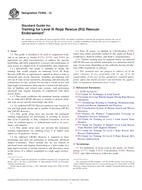
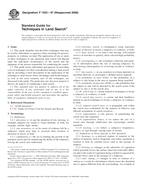 ASTM F1633-97(2008)..
ASTM F1633-97(2008)..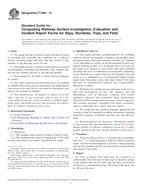 ASTM F1694-14
ASTM F1694-14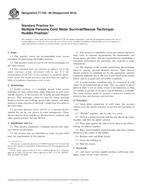 ASTM F1728-96(2014)..
ASTM F1728-96(2014)..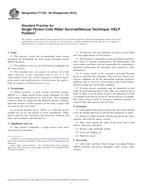 ASTM F1729-96(2014)..
ASTM F1729-96(2014)..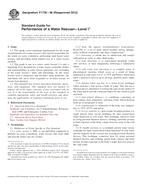 ASTM F1739-96(2012)..
ASTM F1739-96(2012)..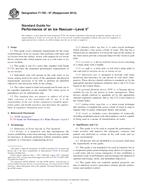 ASTM F1783-97(2013)..
ASTM F1783-97(2013)..
 Cookies
Cookies
